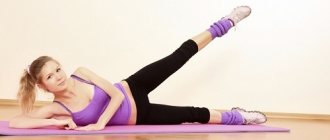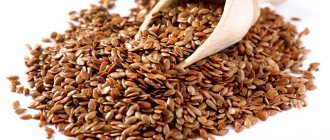In the treatment of gastritis, the most appropriate approach is one that combines drug therapy, diet and physical therapy. Exercise therapy for gastritis is an effective component of disease therapy. It is known that a person cannot consciously control the motility of the digestive organs, but activities that mobilize skeletal muscles can have a positive effect on the process of normalizing the functioning of the stomach.
The role of physical education in the treatment of gastrointestinal pathologies
The problem of impaired stomach functioning affects about 60% of the world's population. Special exercises for gastritis are included in the treatment plan with the following goals:
- increased metabolism, increased blood flow to the diseased organ;
- normalization of gastric juice secretion and organ motility;
- strengthening abdominal muscles;
- prevention of exacerbations of the disease;
- stimulation of the nervous system, general tone of the body.
Exercise therapy for gastritis forms precise coordination of movements, produces strength and endurance, helps to harden the body, and boosts the immune system.
Contraindications and benefits
For any type of gastritis, it is recommended to run daily. Exercise strengthens the abdominal muscles and improves digestive function. Before going for a run, if the acidity of gastric juice is increased, it is recommended to drink oatmeal jelly. The contents envelop the walls of the stomach, acidity decreases. There is no heaviness or discomfort when running.
If the acidity level is low, you can drink a glass of water before active activities. The acid will begin to be released more actively. It is good to take a walk after every meal. Food is digested faster, stomach function improves due to body movements, and a large amount of oxygen is supplied to the blood. Swimming, skating, and skiing improve the body's condition for any type of gastritis.
Any physical therapy exercises are contraindicated in the event of a stomach ulcer, any exacerbation of gastritis, or a noticeable deterioration in the condition. If you feel heartburn and nausea after vomiting, active actions are prohibited. The occurrence of unpleasant sensations in the stomach during exercise is a signal to stop training or replace actions.
If bleeding occurs, if the disease occurs with stenosis, any active actions, including physical therapy for gastritis, are excluded. Physical therapy exercises are allowed only if the gastrointestinal tract is in normal condition and there is no pain.
Any active actions increase energy in the body and help quickly saturate the walls of the esophagus with vitamins. The acidity level is restored, which is necessary for any type of gastritis.
General rules for performing exercises
Gymnastics must be performed in strict compliance with the training rules.
Precautionary measures
You should not exercise during certain periods of illness. Do not exercise when symptoms of exacerbation of gastritis are observed: nausea, vomiting, diarrhea. An inflammatory process with high fever, pain and stomach cramps is a contraindication to exercise.
If you have erosive gastritis, it is prohibited to exercise with bleeding. You should not play sports if you are tired, overwhelmed, or depressed - your emotional mood is no less important than physical readiness.
Time of classes and their duration
Start exercising no earlier than 9 am and no later than 7 pm. To cure gastritis, exercise one and a half hours before or after meals. You can drink mineral water after 15 minutes from the end of classes. The duration of the therapeutic set of exercises is half an hour. The training takes place at the same time. Frequency of classes: minimum - 4 times a week, optimal option - 5-6 times a week.
Load intensity and number of repetitions
The intensity of work depends on the type of enzymatic activity disorder. Low-intensity training is useful for treating gastritis with low acidity. Monotonous exercises are performed with a leisurely rhythm, 5 repetitions. The basic part of the complex is carried out sitting and lying down, paying a lot of attention to the abdominal muscles. Maximum heart rate up to 90 beats per minute.
Patients with gastritis with high acidity are recommended to exercise at a relatively high intensity. The pace of training is accelerated, the pulsation is at the level of 120 beats per minute, each exercise is repeated 15 times. Movements require endurance and complex coordination.
Using gymnastic equipment and creating conditions
Sports activities should not be tiring or boring. Sports equipment will add variety to therapeutic exercises for gastritis. Use dumbbells weighing from 0.5 to 1.5 kg, a gymnastic stick, a ball, a chair. Choose a spacious, well-ventilated room, turn on rhythmic music.
Cotton clothing is preferable, comfortable, not tight and does not impede movement. Sports shoes, light, with elastic soles, you can exercise in socks.
General rules
Chronic gastritis is considered as a disease in which there are inflammatory and dystrophic changes in the gastric mucosa. Most often it develops due to errors in diet, the reflux of bile acids into the stomach, the presence of Helicobacter pylori, and alcohol abuse.
Its main forms include superficial and atrophic. The latter is associated with atrophy of the glands (dystrophic changes) and a decrease in their number.
Long-term persistence of Helicobacter pylori infection is accompanied by an inflammatory reaction; as a result of chronic inflammation, the mass of active glandular tissue decreases. Thus, atrophic gastritis is a consequence of long-existing chronic gastritis.
With this form, the secretion of gastric mucus and the secretion of gastric juice are disrupted. Dysfunction of the mucous membrane affects the breakdown and digestion of proteins, fats, and vitamins.
The term “gastritis” means inflammation of the gastric mucosa and mostly refers to acute gastritis. Chronic gastritis is understood as a violation of the regeneration of cells in the gastric mucosa and its immune inflammation, and only during an exacerbation does a true inflammatory process occur. Acute gastritis is a consequence of acute damage to the mucous membrane (for example, alkalis and acids, alcohol and its surrogates) or acute infection.
Factors in the development of chronic gastritis can be exogenous (exposure to bile acids, Helicobacter pylori, dietary errors, alcohol abuse, taking certain medications, prolonged stress, occupational hazards) or endogenous (autoimmune diseases, hereditary predisposition, endocrine diseases, chronic infections, food allergy).
Domestic gastroenterologists are adopting an approach based on the acid-forming function of the stomach (acidity). Thus, chronic gastritis is distinguished with increased gastric function, preserved, with severe or moderate secretory insufficiency.
Warm-up
Before starting the main part of physical therapy, always warm up for 5–10 minutes. The muscles warm up and prepare for the upcoming load, reducing the risk of injuries and sprains. The desired effect is achieved by a series of simple exercises:
- Walk 60 seconds. Raise your knees higher and work with your hands in a coordinated manner.
- Feet shoulder-width apart, hands along the hips. At the same time, as you inhale, rise onto your tiptoes, your arms smoothly moving up to your sides. Exhale, press your feet to the floor, and gently lower your arms. Do it 5 times.
- Five circular movements of the head clockwise, then in the opposite direction.
- Alternating rotation of the arms 5 times forward and backward to warm up the muscles and ligaments of the shoulder.
- Standing, hands on waist. With an inhalation, smoothly lean to the right, with an exhalation, slowly rise. We inhaled again, tilted to the left, and exhaled gently upward. Number of repetitions: 5 for each side.
- Place your right leg slightly bent at the knee in front of you, resting on your toes. Perform a series of 5 rotational movements of the foot without lifting the toe off the floor in each direction. Do the same with your left foot.
Having finished warming up, move on to the base load. The technique of this part of physical therapy differs for gastritis with increased and decreased secretory function.
Is it possible to play other sports?
Dr. R. G. Hamer, the author of the doctrine of the psychosomatics of diseases, claims that the cause of gastritis is a protracted conflict between close people, mutual disagreement. Joint sports activities will improve mutual understanding in the family, develop common interests and bring relatives closer together. You can do light jogging, skiing, skating, football, and volleyball.
The information on our website is provided by qualified doctors and is for informational purposes only. Don't self-medicate! Be sure to consult a specialist!
Author: Rumyantsev V. G. Experience 34 years.
Gastroenterologist, professor, doctor of medical sciences. Prescribes diagnostics and carries out treatment. Expert of the group for the study of inflammatory diseases. Author of more than 300 scientific papers.
Therapeutic exercise helps to cope with many ailments; it also improves the condition of inflammation of the gastric mucosa. Exercise therapy for gastritis helps restore digestive nervous regulation, thereby normalizing all gastric functions.
Regular exercise helps keep the abs toned and improves blood circulation in the abdominal structures. With intense activity of muscle tissue, many biochemical processes occur that accelerate the course of material metabolism and improve the oxygen supply of cellular structures.
Therapeutic exercises for patients with gastritis with low acidity
Training for chronic hypoacid gastritis is smooth and slow. They practice lying on a mat and strengthen their arm muscles with 0.5 kg dumbbells.
- Place your feet slightly wider than shoulder width, hands on your waist. Toes point forward. We squat slowly. Move down with inhalation, up – exhale. Knees at right angles, slightly springy.
- Spread the mat and lie on your back. Take the dumbbells in your hands and lift them up. Smoothly spread your straight arms out to the sides five times and touch the floor. When the muscles get stronger, increase the number of repetitions to 10.
- Lying on the floor, straight arms with dumbbells extended along the body. With an inhalation, raise your arms until they are perpendicular to the floor, and exhale slowly downwards. Perform 5 times.
- Put away the dumbbells. Place your crossed legs bent at the knees on your stomach. Place your fingers in a lock at the back of your head, your back pressed to the floor. Raise your upper body above the floor by 15 cm and lower it smoothly. Do this 5–10 times.
- Lying on your back, arms parallel to the body. Legs are bent at the knees under and raised above the floor. Touch the floor with the toe of your right foot and move it to the starting position. Do this with each leg 5 times in turn.
- Lie on your right side. With your left leg slightly raised, make circular movements in a small amplitude to the right and left 5 times. Repeat on the other side.
- Sitting on the floor, spread your legs as far apart as possible. Try to touch the toes of your feet with your fingers extended forward in a springy tilt.
- Lie on your back with your eyes closed. Slowly inhale, exhale, relax.
Non-tiring walks in the fresh air, swimming, and aerobics in water have a positive effect on gastric secretion.
Exercise therapy for patients with gastritis with high acidity
The training regimen of people with gastritis with increased secretion is characterized by a rather high rhythm. Before starting the complex, prepare a chair with a back, 1 kg dumbbells, and an exercise mat on the floor.
- Stand at the back of the chair, grab it with your hands. Take a low swing with your right leg back. The back is straight. Do each leg 7-10 times.
- From the same position, swing your straight leg slightly to the side up to 10 times.
- Sit on a chair, take dumbbells. Move your body forward, arms down. Inhaling, raise your arms until they are parallel to the floor and hold for 2 seconds. Exhaling, gently lower through the sides. Do up to 10 times.
- Place your arms with dumbbells bent at the elbows behind your head. Straighten them over your head and bend them again 10 times.
- Put the dumbbells aside, lay out the mat and get down on all fours. At the same time as we inhale, we lift ourselves off the floor with our left arm and right leg. We reach up. Lower your limbs as you exhale. Now we work with our right hand and left foot. Repeat 7 times on each side.
- From a position on all fours, support on both hands. The right leg is raised to parallel with the floor and swings up and down 10 times. Change your leg. Then perform 10 swings with each leg left and right.
- In the same position, while inhaling, we arch our back upward, like a cat. As you exhale, bend your spine downward. We do it 10 times.
- Without changing posture, we smoothly lower ourselves onto our heels, arms extended forward along the floor, head lowered. Stretch your back and relax.











